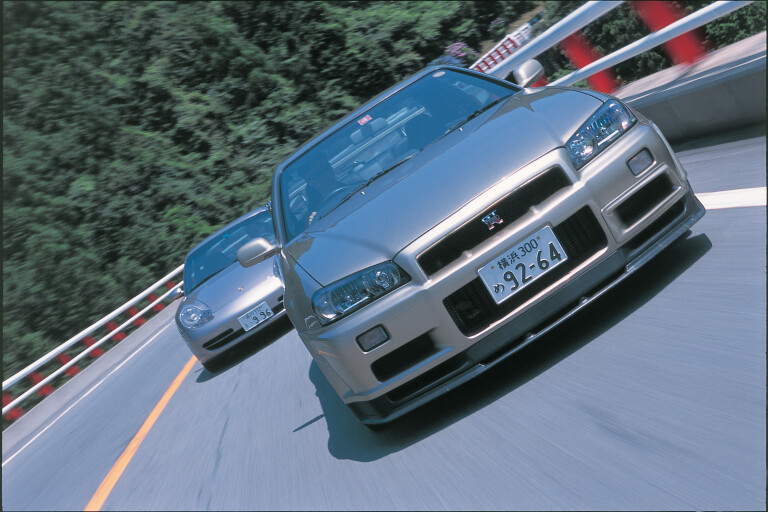
The mighty new R34 GT-R M-spec hints at the future of the next GT-R
This feature was first published in the March 2002 issue of MOTOR Magazine
Any GT-R diehard knows that Nissan built the R32 Skyline GT-R back in 1989 for one reason; to win races.
And it did so, not just in Japan, but also in Australia where its all-wheel drive, twin-turbo, hi-tech wizardry blitzed the touring car championships for two straight years, in 1991 and 1992.
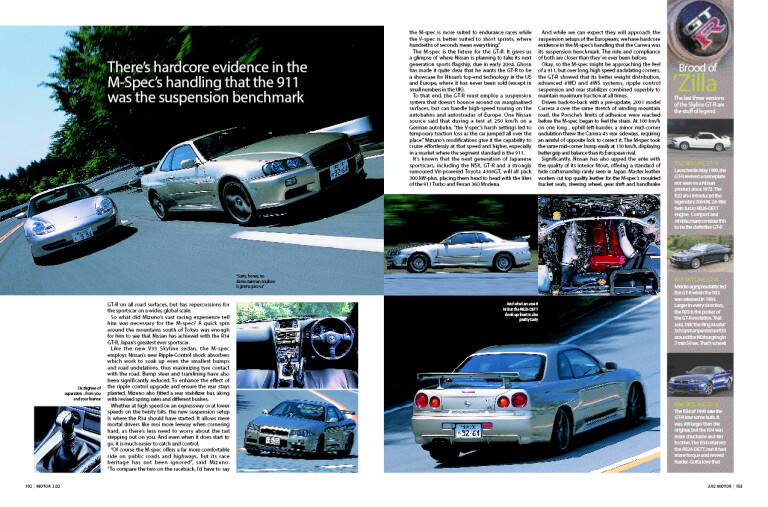
The man who was to become known as ‘Mr GT-R’, Kozo Watanabe, followed that racing tradition with the R33 and R34 models during the Nineties, including specially tuned V-spec variants. Then, as if to signal the radical change of direction Carlos Ghosn had chosen for Nissan, Watanabe was replaced by a new team of engineers headed by Kazutoshi Mizuno, former Nissan Le Mans chief engineer and team manager.
One of the first things Mizuno did while he and his team worked on the handling traits of the new V35 Skyline sedan, was to modify the current GT-R’s V-spec suspension setup. He felt that its harsh, highly strung road-handling characteristics were good for circuit racing but in the real world it needed more compliance.
The resulting M-spec is not just a better rounded GT-R on all road surfaces, but has repercussions for the sportscar on a wider, global scale.
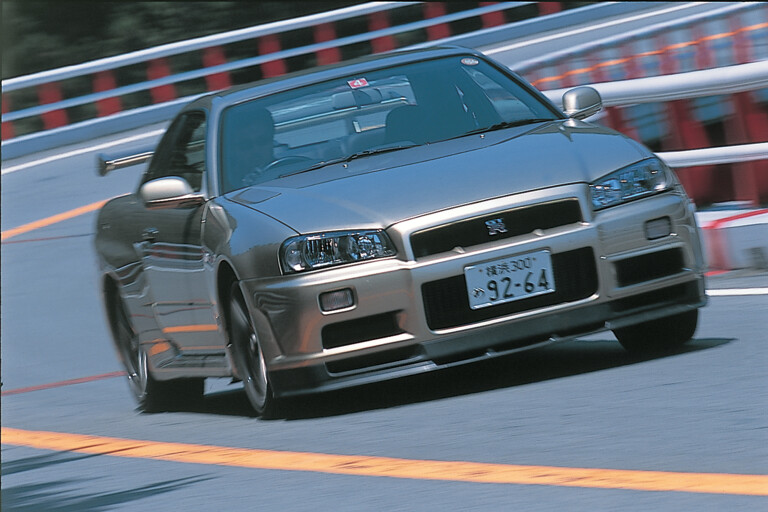
So what did Mizuno’s vast racing experience tell him was necessary for the M-spec? A quick spin around the mountains south of Tokyo was enough for him to see that Nissan has achieved with the R34 GT-R, Japan’s greatest ever sportscar.
Like the new V35 Skyline sedan, the M-spec employs Nissan’s new Ripple-Control shock absorbers which work to soak up even the smallest bumps and road undulations, thus maximizing tyre contact with the road. Bump steer and tramlining have also been significantly reduced. To enhance the effect of the ripple control upgrade and ensure the rear stays planted, Mizuno also fitted a rear stabilizer bar, along with revised spring rates and different bushes.
Whether at high speed on an expressway or at lower speeds on the twisty bits, the new suspension setup is where the R34 should have started. It allows mere mortal drivers like moi more leeway when cornering hard, as there’s less need to worry about the tail stepping out on you. And even when it does start to go, it is much easier to catch and control.

“Of course the M-spec offers a far more comfortable ride on public roads and highways, but its race heritage has not been ignored”, said Mizuno.
“To compare the two on the racetrack, I’d have to say the M-spec is more suited to endurance races while the V-spec is better suited to short sprints, where hundreths of seconds mean everything.”
The M-spec is the future for the GT-R. It gives us a glimpse of where Nissan is planning to take its next generation sports flagship, due in early 2004. Ghosn has made it quite clear that he wants the GT-R to be a showcase for Nissan’s top-end technology in the US and Europe, where it has never been sold (except in small numbers in the UK).

To that end, the GT-R must employ a suspension system that doesn’t bounce around on marginalised surfaces, but can handle high-speed touring on the autobahns and autostradas of Europe. One Nissan source said that during a test at 250 km/h on a German autobahn, “the V-spec’s harsh settings led to temporary traction loss as the car jumped all over the place.”
Mizuno’s modifications give it the capability to cruise effortlessly at that speed and higher, especially in a market where the segment standard is the 911.
It’s known that the next generation of Japanese sportscars, including the NSX, GT-R and a strongly rumoured V8-powered Toyota 4300GT, will all pack 300 kW-plus, placing them head to head with the likes of the 911 Turbo and Ferrari 360 Modena.

And while we can expect they will approach the suspension setups of the Europeans, we have hardcore evidence in the M-spec’s handling that the Carrera was its suspension benchmark. The ride and compliance of both are closer than they’ve ever been before.
Okay, so the M-spec might be approaching the feel of a 911, but over long, high speed undulating corners, the GT-R showed that its better weight distribution, advanced 4WD and 4WS systems, ripple control suspension and rear stabilizer combined superbly to maintain maximum traction at all times.
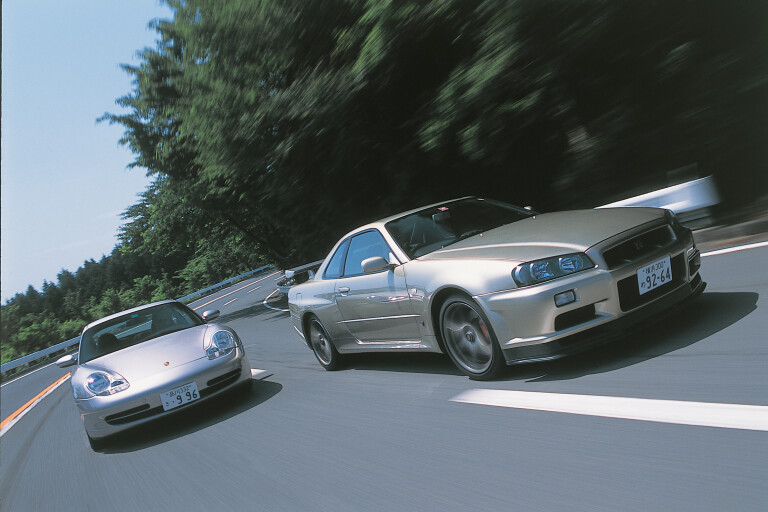
Driven back-to-back with a pre-update, 2001 model Carrera 4 over the same stretch of winding mountain road, the Porsche’s limits of adhesion were reached before the M-spec began to feel the strain. At 100 km/h on one long , uphill left-hander, a minor mid-corner undulation threw the Carrera 4’s rear sideways, requiring an armful of opposite lock to correct it. The M-spec took the same mid-corner bump easily at 110 km/h, displaying better grip and balance than its European rival.
Significantly, Nissan has also upped the ante with the quality of its interior fitout, offering a standard of hide craftsmanship rarely seen in Japan. Master leather workers cut top quality leather for the M-spec’s moulded bucket seats, steering wheel, gear shift and handbrake lever. The M-spec also now gets heated front seats, a wiper de-icer, a better cold weather resistant battery, and a more powerful heater. It’s all designed to take on the Europeans at their own, luxury game.
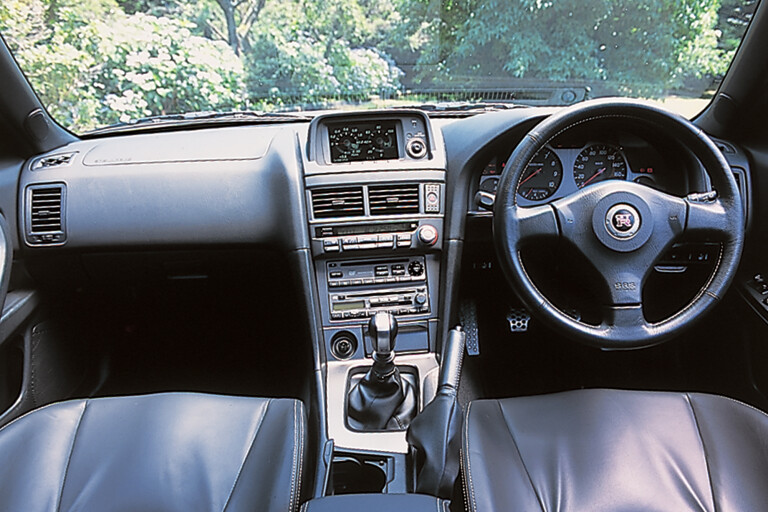
One game Porsche and other Euro makers can compete in and win, however, is the power war. The GT-R’s twin-turbo, 2.6-litre straight-six pumps out a claimed 206 kW at 6800 rpm and 392 Nm at 4400 rpm. But a Nissan insider suggests, on the quiet, that our test car pumps out in excess of 240 kW.
Still, the manufacturer-imposed agreement to limit power outputs of Japanese cars remains one of the main bones of contention for those wanting to compete with Europe’s best. Most of these car makers already have engines that, with minor tweaks, are capable of clearing the 250 kW mark. But they’ll remain nobbled until one, or all, of the car makers decide otherwise.
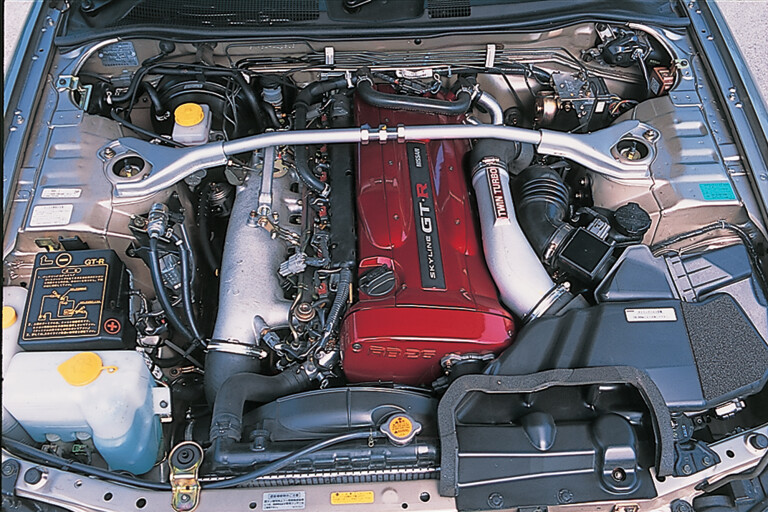
Nissan has launched the M-spec saying that it’s one other possible definition of a GT-R. But it is much more than that. Keeping the 2004 model GT-R’s 330 kW-plus expected power in mind, the M-spec’s more compliant suspension and Euro-friendly interior qualities provide the missing link to the next generation of Japanese supercars – cars that are destined to give Europe’s reigning heroes a real run for their money.


COMMENTS